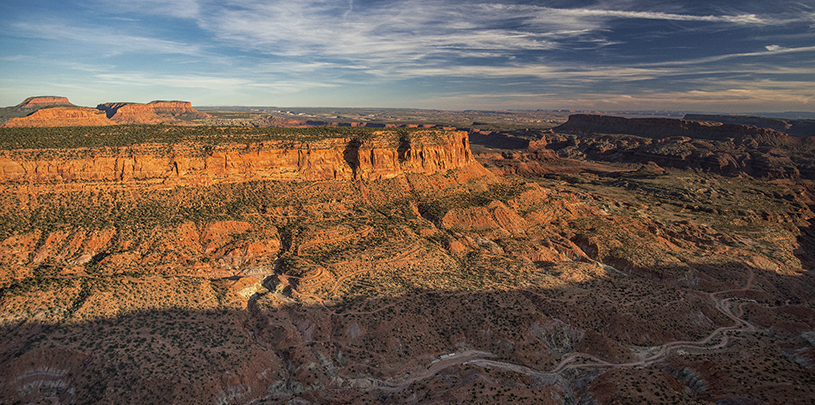
Drill in hand, Samantha Shupla waited for her partners to position a log into place. Others from the crew dug post holes, jumping in feet first to measure their progress. And more team members carried old, weathered logs away, returning with fresh, new ones.
“If these kids keep working this hard, we’re gonna have to find more fences to rebuild,” said Geoffory Anderson, our crew leader from the North Kaibab Ranger District of the Kaibab National Forest.
More than ranch work
This September, we teamed up with the Hopi Tribe and the Forest Service to improve fences on the North Rim Ranches, near the north rim of the Grand Canyon. Nine young Hopi workers, joined by their elders and Hopi tribal staff, provided the muscle for the week, breaking rock, shoveling dirt, and hoisting logs at Fracas and Dog Lakes, two small lakes high up on the Kaibab Plateau. These lakes provide drinking water for cows and wildlife in the dry country, but the animals were making a muddy mess of important aquatic habitat. The existing fences around each lake weren’t doing their job of keeping cattle out and needed to be replaced.
But the trip was about more than ranch work. It was an opportunity for young Hopi workers to build career skills, learn from their elders, and renew cross-generational connections to people and place.
Teamwork makes a dream work
It only took one day of post-hole digging and nail pounding for me to agree with Geoffory — this crew labored hard. And they liked to have fun while they worked. Forest Service staff guided us as we rebuilt multiple sections of fence, and, by the end of the week, we had finished work at the two lakes and started at a third.
In addition to the hands-on work, we took time during our week together to hear presentations from our colleagues about personal goals and possible career paths.
Everett Gomez, a case worker for the Hopi Tribe’s Workforce Innovation and Opportunity Act program summed it up: “This week is all about providing you with encouragement around career exploration, continuing education, peer and professional mentoring, cultural teachings, and positive life skills.”
We heard from Hopi staff about cultural preservation and potential careers in wildlife and grazing management on tribal lands. Forest Service archaeologists shared stories on deep time and tribes. Researchers from the Springs Stewardship Institute revealed the science behind springs restoration, and two rangers from the Grand Canyon outlined how to construct a career path into the National Park Service. Folks from Arizona Game and Fish even led us on a search and discovery mission using radio telemetry (the technology used to track animal movements — think radio collars).
For two of our five field days, Heather Provencio, supervisor of the Kaibab National Forest, worked side by side with the crew at Dog Lake, ate meals with us, and provided perspective that only a national leader can share with a team.

Looking forward
At the end of the week we all came together in a final circle. The crew members spoke of the impact of the week — the fence restoration labor grounding us in the present, and the lessons learned from elders and experts providing support into the future.
The partnership with the tribe, the Trust, and the Forest Service is strong, and we are gearing up to do more next year. There are numerous lakes ready to be made resilient to cows and climate change, young people who want to learn new skills to move their lives forward, and a team behind them that is primed for support.
A special thanks to:
Everett Gomez, case manager with the Hopi Tribe’s Workforce Innovation and Opportunity Act program, Joel Nicholas, archaeologist with the Hopi Cultural Preservation Office, and Mike Lyndon, tribal liaison with the Kaibab National Forest.




